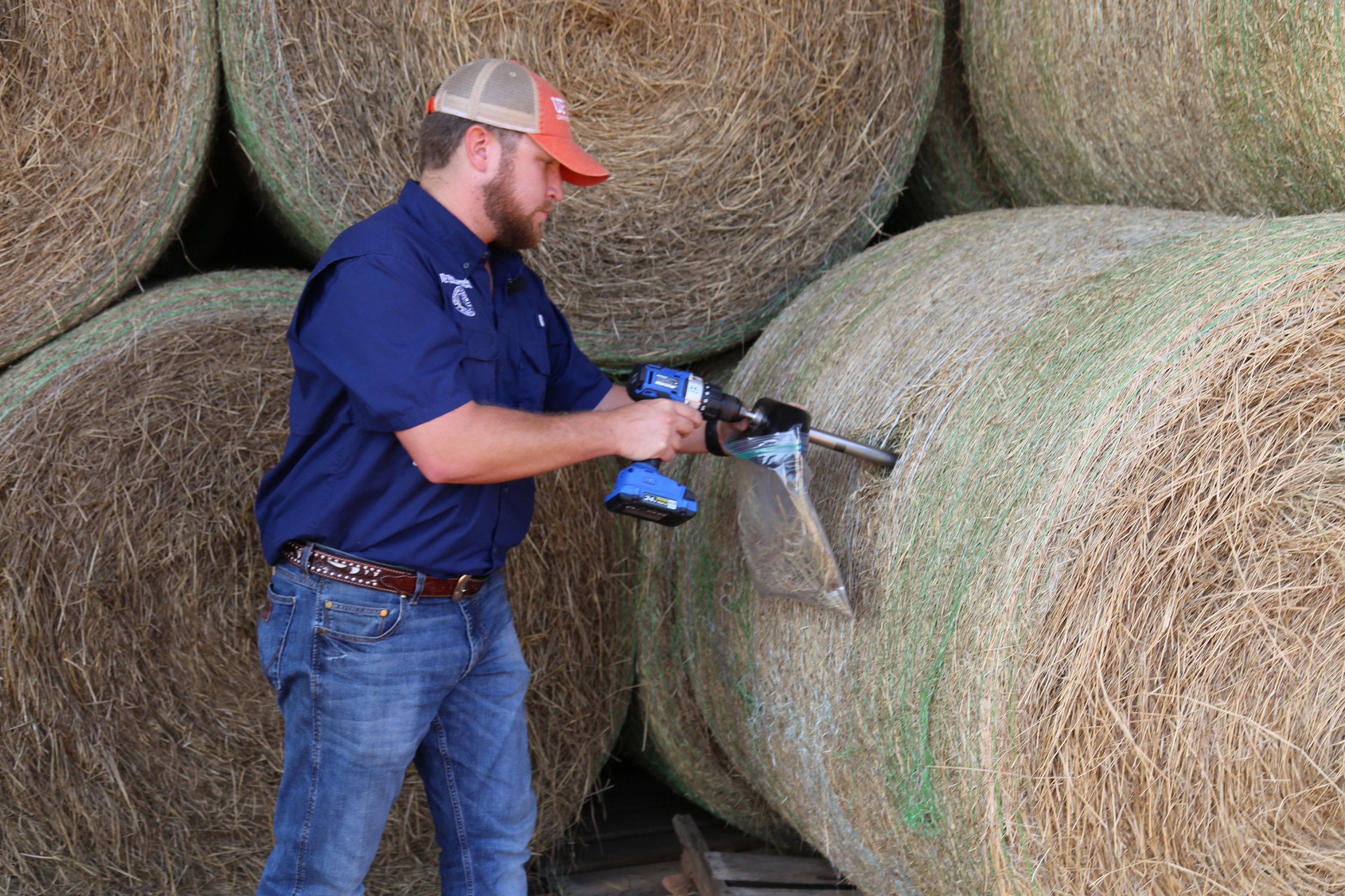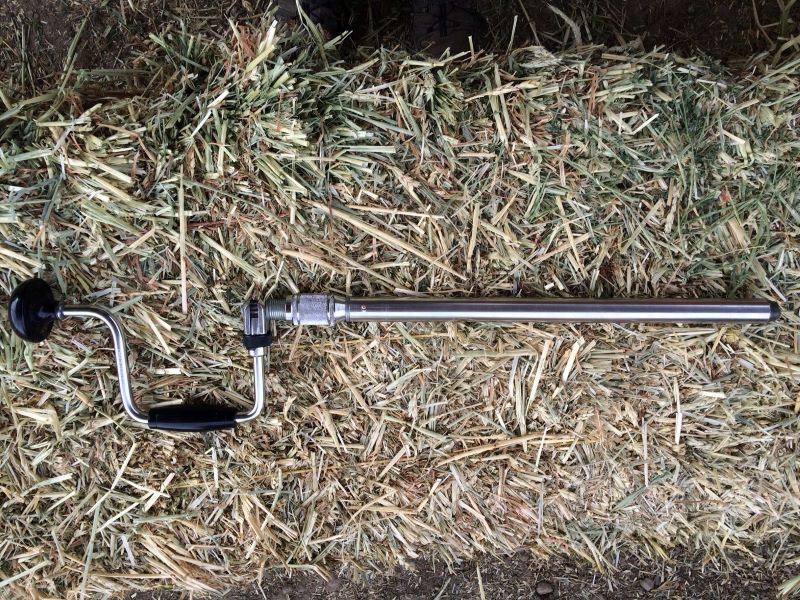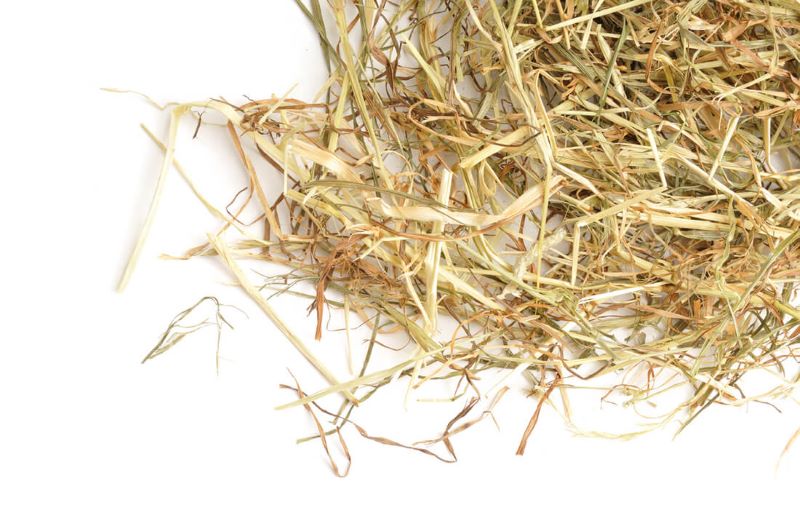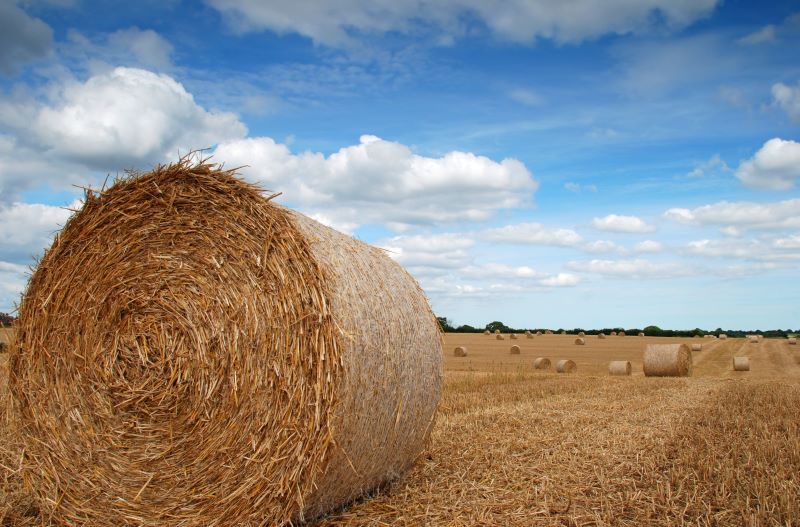Sampling hay is important for many reasons. Do you grow and sell hay? You want the highest quality product you can offer and a hay sample will help you get there. Do you raise livestock and you are concerned about anti-quality factors negatively affecting your animals? A hay sample will help you adjust your nutrition program to meet your goals. Among other things, samples determine moisture levels, protein percentages, TDN (total digestible nutrients), and nitrate levels.
Hay sampling definitely isn’t rocket science. However, just like soil sampling, there are some tips and techniques you will want to follow to obtain a good hay sample. The better the hay sample, the more useful your test results will be. Continue reading for the three tips we feel are most important!

Tip #1: Use Good Hay Probes
The first and most important tip for taking a hay sample? Use a good, sturdy hay probe! Samples should always be taken with a hay probe. Never grab samples with your hands because small (but important) particles may not make it to the sample bag when they’ve fallen through your fingers.
There are a wide variety of hay probes available, but here is a list of the key elements that make up a good hay probe:
- Push or drill type – because it is difficult to penetrate a bale with manual power, a drill-type hay probe may be preferable
- Good, sharp tip: this can be straight, scalloped, or serrated – the most important detail would be a 90-degree angle from the shaft
- Tip must be 3/8" to 3/4" in diameter – small tips don't grab enough hay and large tips grab too much
- Ability to sharpen and/or replace the tip
- Tip diameter must be less than shaft diameter
- Must be easy to use
- Shaft length should be 12" to 24"
- Collection container must be large enough to hold 20 cores and must be easy to empty into airtight bag such as a Ziploc
- Produces about 1/2 pound of sample in 20 cores
- Should be durable and easy to transport

Tip #2: Take Representative Samples! Lot, Depth, and Sample Location
Sample your hay lots separately, testing at least 10% of the bales from each lot. As best as you can, try to sub-sample bales from each lot randomly and make sure you get at least ten representative sub-samples. These sub-samples should all go in the same mixing container (like a 5-gallon bucket) and after you’ve obtained all of them, thoroughly mix them before taking a scoop sample from the bucket to send to the lab.
Keep in mind, testing labs will not grind large samples. Instead, they test sub-samples of the material that you send in to them. Therefore, it is incredibly important that you take representative samples of your hay and mix them appropriately before sending them in.
How do you make sure that you’re taking representative samples? Apart from randomly sub-sampling bales within each lot (at least 10% of the lot), you also need to take a sub-sample from the right location within the bale.
Keep in mind that a hay probe should be designed to fairly represent the leaf-stem ratio or legume-grass-weed mix of hay in a sample. Taking a sample from the wrapped side of the bale to the center of the bale is crucial because this allows you to capture cuttings from the entire field (or the entire area that was cut for that bale), not just a section of the bale (and a small area of field). If a sample is taken from the spiral, it is more than likely gathering cuttings from a small portion of the field.
In large bales, 50% of the weight is in the outer 12 inches, so going 24 inches into a bale is unnecessary. An 18" probe is usually recommended if most hay samples will be from large bales. If you’re sampling small bales, 12” probes are fine.

Tip #3: The Type of Sample Collection Container DOES Matter
Your sample collection container should not allow for the loss of fine particles or moisture. Fine particles can be clues to issues with anti-quality factors (such as mold or nitrogen levels) and moisture loss from the sample will cause a lower quality rating.
If your hay is too low in moisture, the nutritional value will plummet because many of the valuable nutrients (the “goodies”) are brittle and fall from the bale before it reaches the animal’s mouth. If your hay is too high in moisture, the hay could spoil and potentially combust. And sometimes the outside of the bale is dry and the inside is moist. For all of these reasons, it’s very important your hay sample moisture level be as true to the bale as possible – so that you can accurately understand your bale moisture characteristics.
Sample container styles consist of different types of canisters or plastic bags. Some cores can be removed and emptied into a bag, or the probe may have an opening for a bag to be attached so the sample falls right in. Other probes have canisters attached to them so that the sample falls right into the canister as you remove the probe from the bale. The key here is that the containers prevent as much loss as possible.
As we described earlier, it’s also important to mix your sub-samples, so if your sample collection container does not allow for appropriate mixing of all of your sub-samples, then using something like a 5-gallon bucket is fine – as long as you make sure to mix the sub-samples well and use a scoop to collect a total sample to send into the lab.
Fall is just around the corner…
Fall storage season is almost upon us, so sampling hay is important for your winter preparedness. For a more in-depth review of hay sampling, we recommend this video from the University of Nebraska-Lincoln Extension Service – or this video from Oregon State University Extension service.
This is also a good time to renovate existing pastures and plant winter grains for spring early forage harvest. For any of your forage and pasture seed questions, feel free to call us at (877)-247-3736!



